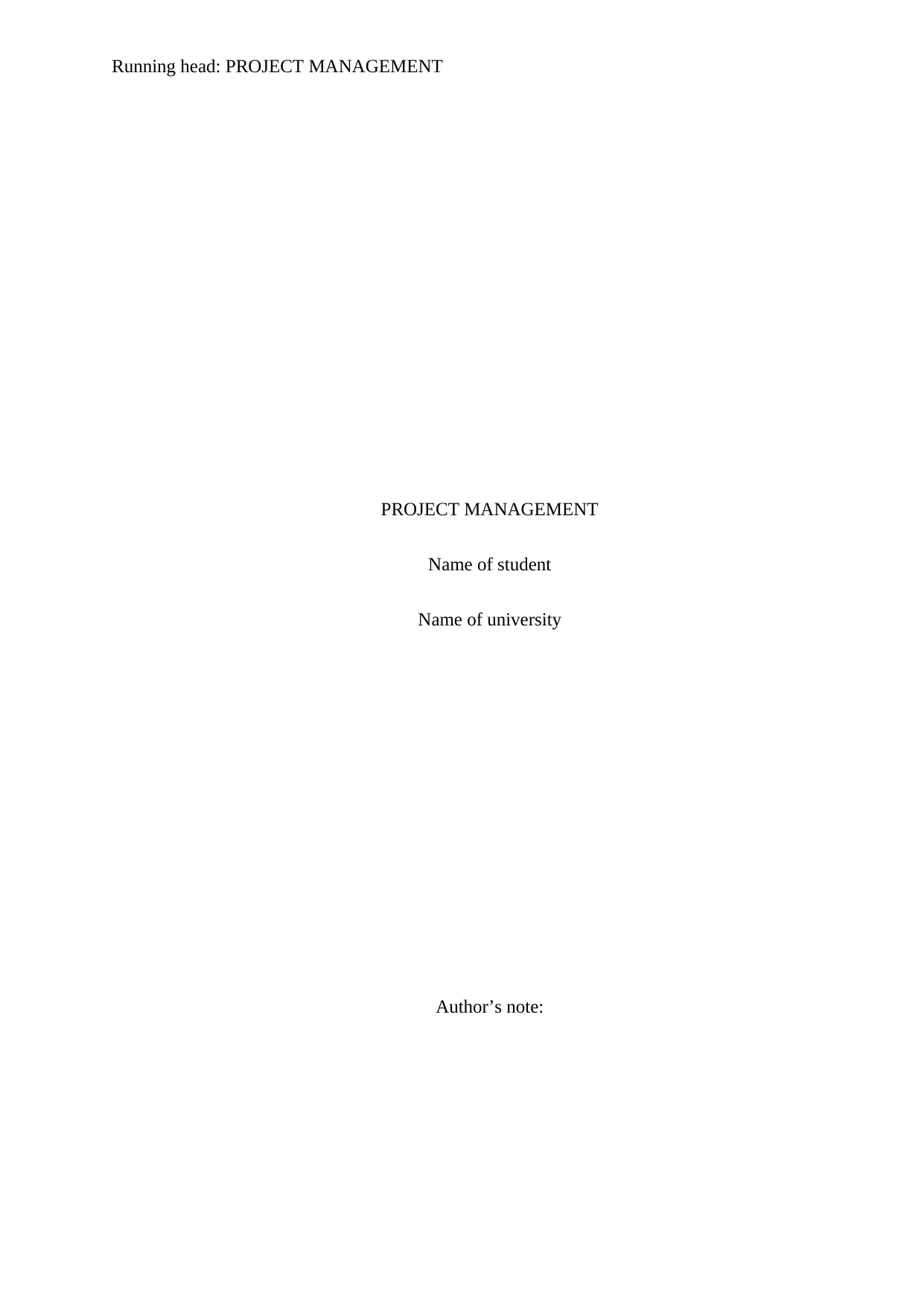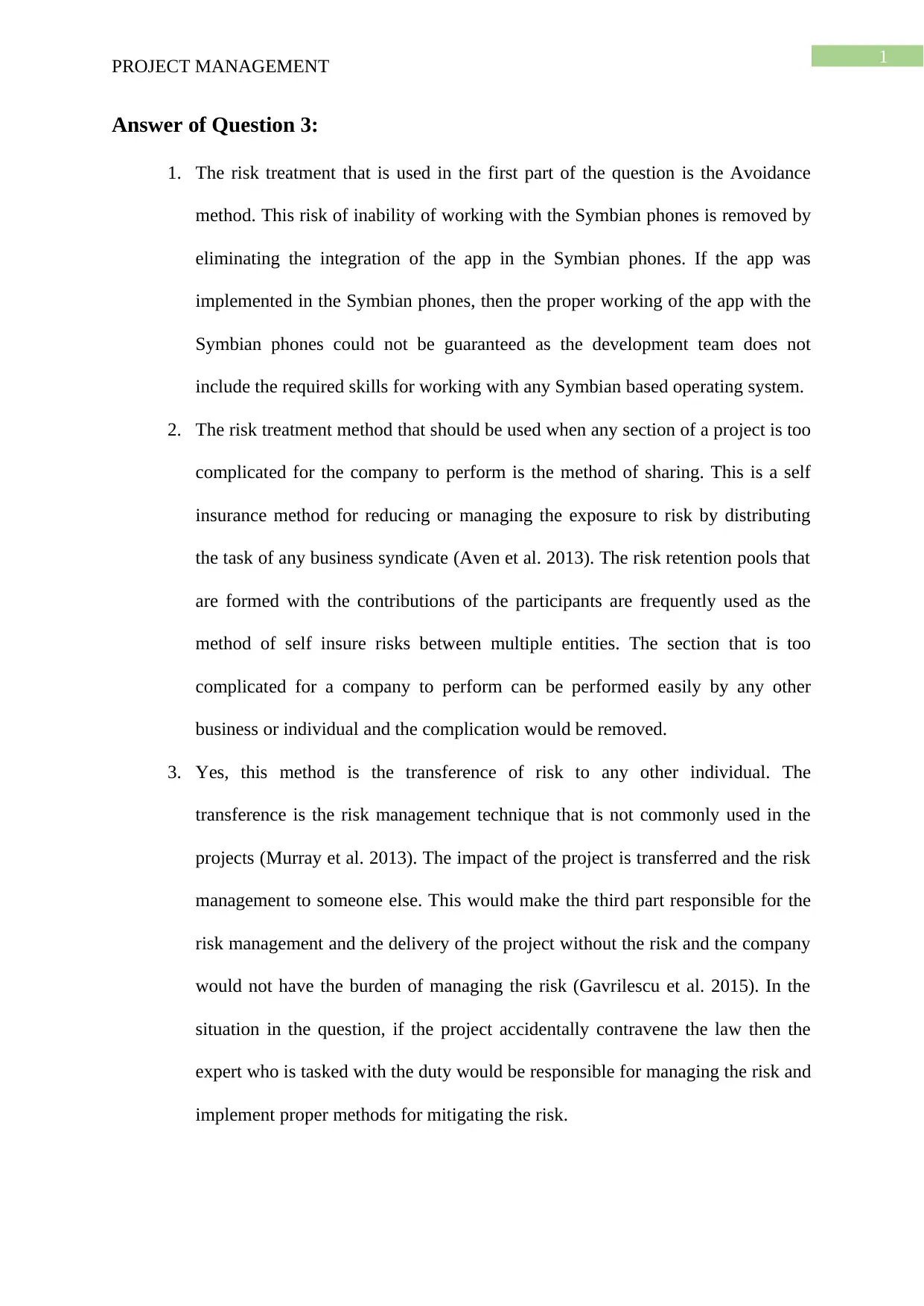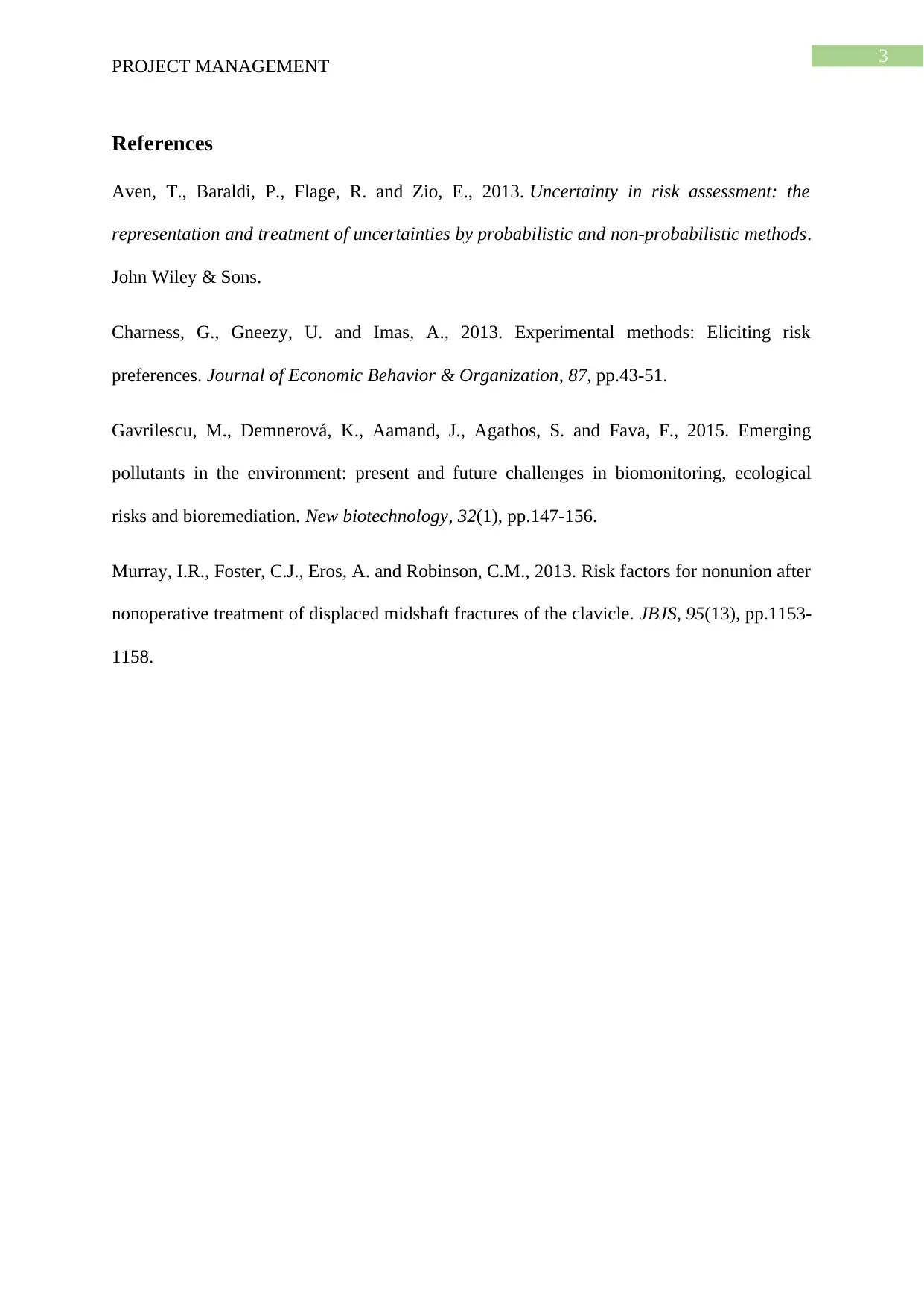Project Management - Risk Treatment Methods Analysis and Report
VerifiedAdded on 2023/04/22
|5
|647
|366
Project
AI Summary
This project management assignment explores various risk treatment methods through the analysis of a specific scenario and the application of risk management principles. The assignment addresses a scenario involving the development of a mobile application across different operating systems, highlighting the risk of the development team's lack of skills in working with Symbian phones. The solution identifies the avoidance method as a suitable risk treatment, eliminating the integration of the app with Symbian phones. Furthermore, the assignment delves into the sharing method, recommending its use when a project section is too complex for a company to handle, and the transference method, emphasizing the transfer of risk management responsibility to a third party. Lastly, the acceptance method is discussed in the context of acknowledging risks with potentially minor impacts. References to relevant academic sources support the analysis.
1 out of 5








![[object Object]](/_next/static/media/star-bottom.7253800d.svg)